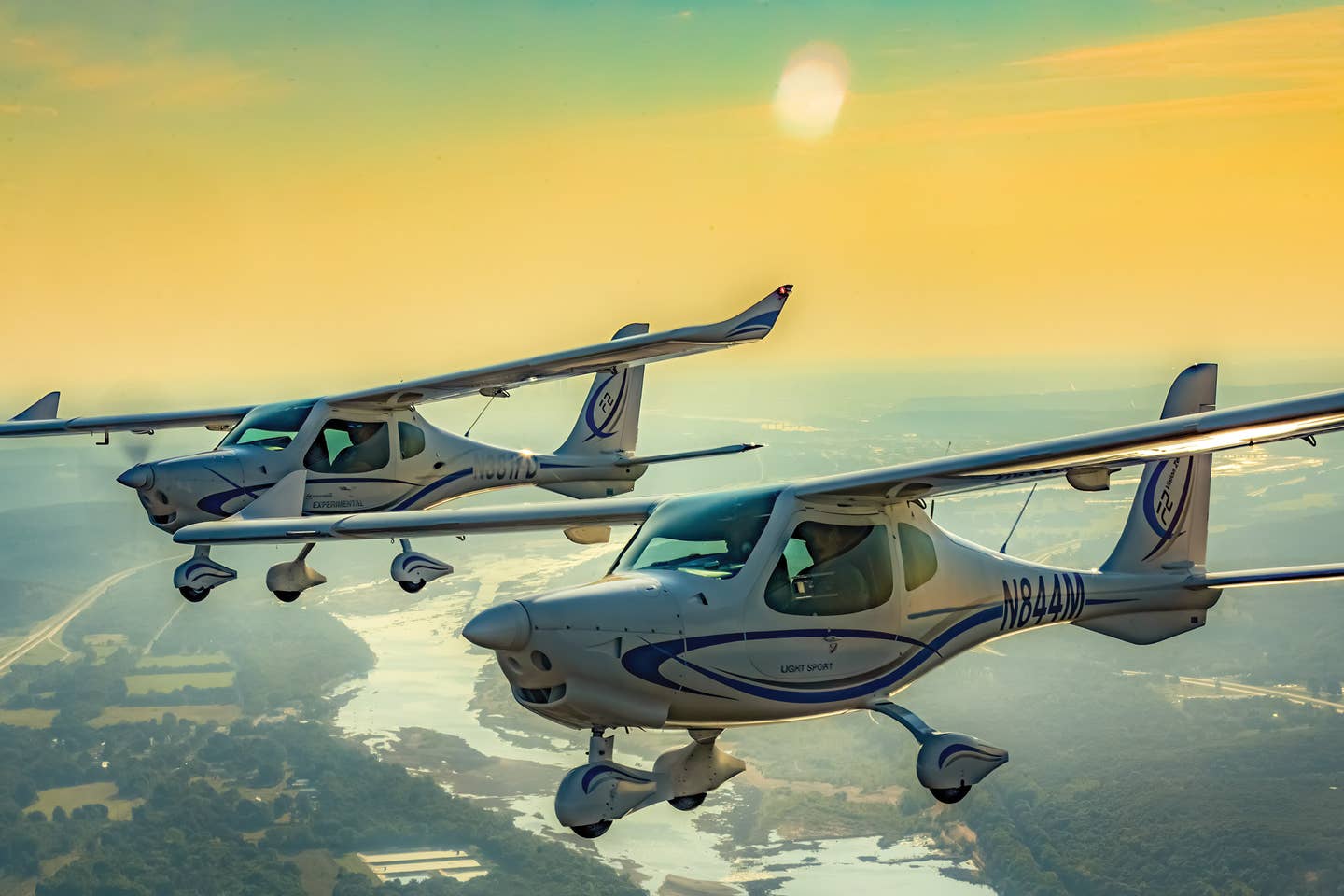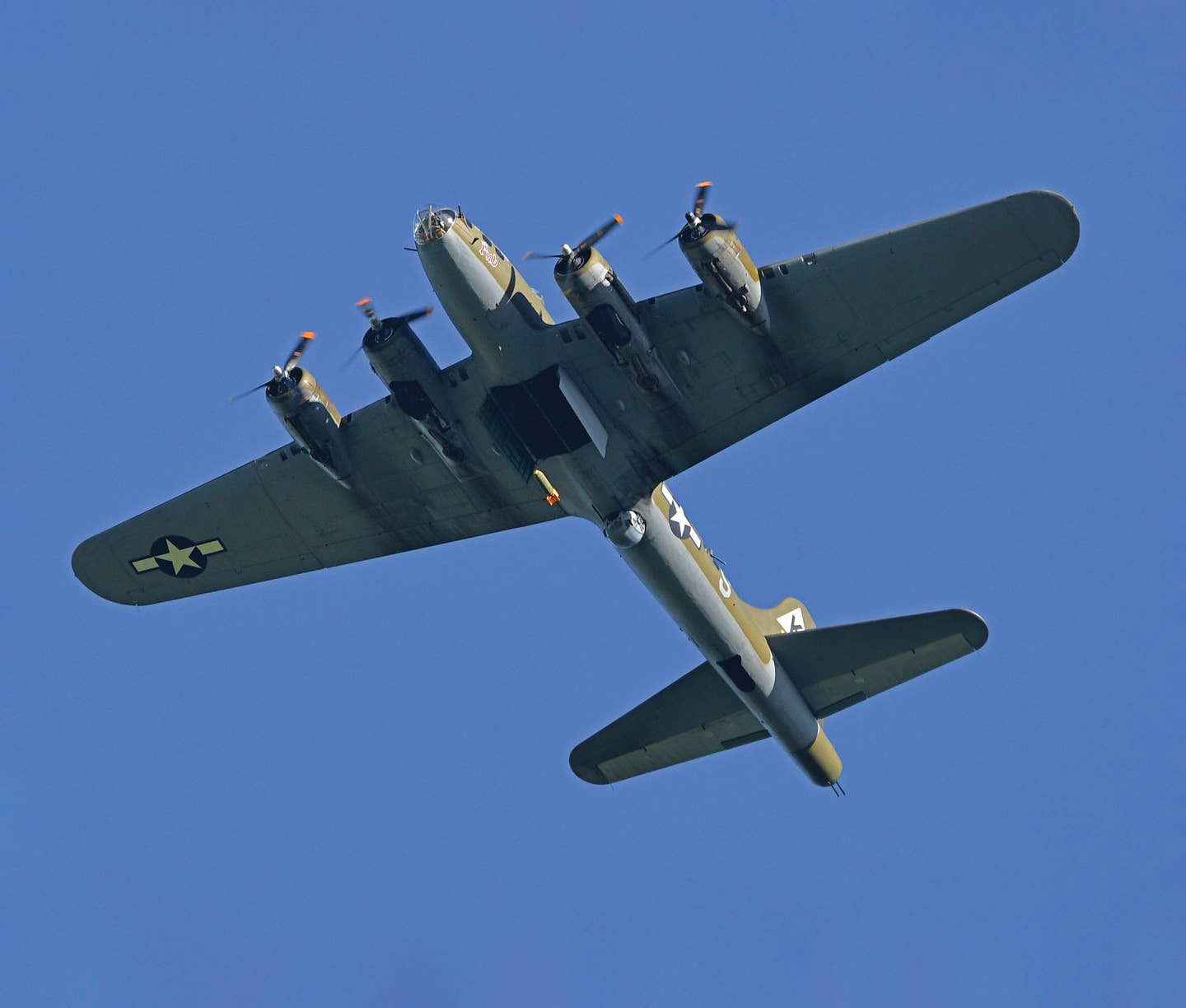The Crosswind Component
The principle is the same whether you’re flying a 737 or an LSA
 DIRECTIONAL CONTROL. A Continental Airlines 737-500 like this ran off the runway during a nighttime departure from Denver, Colo. The pilot failed to adequately compensate for strong crosswinds. |
Contrary to what some pilots may think, an aircraft's maximum demonstrated crosswind component is only an operating limitation if the aircraft's manufacturer says so. It's not a limitation imposed by FAA regulations. During the type certification process, the FAA requires the manufacturer to demonstrate that its airplane can be controlled in 90-degree crosswinds up to 20% of Vso. The demonstration is performed by a test pilot who's not supposed to use exceptional skill or alertness. The FAA doesn't require that a manufacturer set limitations based on the demonstration, or even publish guidelines for gusty crosswinds that may briefly exceed the maximum demonstrated crosswind component. The need to know what their airplane will or won't do in crosswinds unites pilots of light-sport aircraft, jet airliners and everything in between.
The NTSB recently completed its investigation into the December 20, 2008, crash of Continental Airlines flight 1404, a Boeing 737-500 that ran off the left side of runway 34R during a night takeoff from Denver International Airport, Denver, Colo. A fire broke out. The captain and five of the 110 passengers received serious injuries. The first officer, two flight attendants and 38 passengers received minor injuries. The rest of those on board were uninjured. There were visual meteorological conditions with strong, gusty winds from the west, kicked up by nearby mountain wave conditions.
After the flight was cleared into position on runway 34R, the pilots completed the before-takeoff checklist. According to the cockpit voice recorder, the captain commented, "Looks like...some wind out there." The first officer replied, "Yeah," and the captain stated, "Oh yeah, look at those clouds moving." The wind as reported by the ATIS was supposed to be only 11 knots. But the local controller radioed that the wind was from 270 degrees at 27 knots, assigned a departure heading of 020 degrees and cleared them for takeoff. The wind as reported by the tower was well within the airline's crosswind guideline of 33 knots when using a dry runway. Boeing doesn't mandate a crosswind limitation.
The first officer acknowledged the takeoff clearance. As the airplane began to power up, the captain told the first officer, "Alright!left crosswind, 20, ah, seven knots...alright...look for 90.9 (90.9% engine power setting)." The captain told investigators that as the airplane accelerated, he shifted the primary focus of his attention from the thrust levers to outside visual references, keeping the airplane on the runway centerline. The first officer's attention was primarily focused on monitoring the engine instruments. The first officer told investigators that after the power was set, he shifted his attention to monitoring the airspeed so that he could make the standard airspeed callouts.
The flight data recorder (FDR) showed that as the airplane accelerated, right-rudder-pedal inputs increased, while the control wheel and column and their respective control surfaces were at their neutral positions. As the airplane accelerated through about 55 knots, the airplane's heading began to move left, and the FDR recorded the beginning of a large right-rudder-pedal input. At the same time, the control wheel was turned to the left. The nose of the airplane then moved right. The 88% right-rudder-pedal input then dropped to only 15%. After the airplane hit 85 knots, the nose started moving back to the left. Then, there was another large right-rudder-pedal input. At about 90 knots, the amount of right-rudder-pedal input again dropped, and it briefly went to neutral. The control wheel was turned from left to right. The first officer said, "Oh, [expletive]." The captain called for a rejected takeoff. FDR data showed engine power was reduced, brakes applied and thrust reversers deployed. The airplane ran off the left side of the runway about 2,600 feet from the beginning. It crossed a taxiway and an airport service road before stopping.
Both pilots told investigators there were a couple of "very painful" bumps before the airplane came to a stop. They indicated that they were dazed or "knocked out" for a minute or two.
The captain had more than 13,000 total flight hours. The first officer had about 8,000 hours.
A meteorological study found that there was well-defined mountain wave activity near Denver around the time of the accident. Winds reached 80 to 100 knots in the higher-elevation foothills west of the airport, with winds of 40 knots to 68 knots at the airport. The undulating motion of the waves resulted in strong, very localized, intermittent gusts at the airport's surface. In addition, investigators received a civilian report of a wind gust of about 50 miles per hour that lasted two to three minutes. It came from a couple driving a vehicle west of the airport. Further, an airline captain who was in a plane parked at one of the gates closest to the accident site told investigators that he heard a rumbling sound and felt the airplane shake as a result of a sudden increase in wind near the time of the accident. This captain saw debris blowing on the ramp and ramp personnel having trouble standing in the high winds. He estimated the wind gust speed exceeded 50 mph and lasted 45 to 50 seconds.
The Safety Board found that Continental's simulator training didn't replicate the ground-level disturbances and gusting crosswinds that often occur at or near the runway surface. The Board said it also wasn't likely that the accident captain had previously encountered gusting surface crosswinds like those on the night of the accident. The Safety Board concluded that the captain wasn't adequately prepared to respond to the wind and changes in heading encountered during the accident takeoff.
The Safety Board noted that although there are wind-detection sensors at various locations around the airport, only wind information pertinent to the runway being used was given to the pilots, in accordance with standard procedures. The Safety Board hinted that had the controller been required to give the captain wind reports from around the airport, he might have questioned whether runway 34R was the best one to use.
The NTSB determined that the probable cause of this accident was the captain's cessation of right-rudder input, which was needed to maintain directional control of the airplane, about four seconds before the excursion, when the airplane encountered a strong and gusty crosswind that exceeded the captain's training and experience. Contributing to the accident were an air traffic control system that didn't require or facilitate the dissemination of key, available wind information to the air traffic controllers and pilots and inadequate crosswind training in the airline industry due to deficient simulator wind-gust modeling.
A Piper PA-18 Super Cub had been on a local flight from a private airstrip at Wasilla, Alaska, so that the pilot could show a visiting friend some of Alaska's scenery. About 20 minutes after departure, the airplane returned to the vicinity of the airstrip. A witness said the pilot circled overhead once, then began an approach for landing to the south. The pilot had to correct for a left crosswind. The witness said that as the airplane passed over the approach end of the strip, it became unstable and drifted to the right toward trees. He said that just before the airplane touched down, the engine power increased, the nose went up and it began to climb. The airplane struck a tree and it crashed into the woods. The pilot was fatally injured, while the passenger received minor injuries. She told investigators that the pilot warned turbulence might increase as they got closer to the airstrip. She said that as they descended below the tree line, the left wing lifted and they drifted to the right, toward the trees. She said the pilot added full power and applied full-left aileron and up-elevator before they impacted the first tree.
The NTSB determined that the probable cause of the accident was the pilot's failure to maintain directional control while landing in a gusty crosswind.
In its Aircraft Operating Instructions, the manufacturer of a special light-sport aircraft says this: "Takeoff and landing with crosswinds require a lot of training and experience. The greater the crosswind component, the more experience is required."
The NTSB didn't come up with a wind reading at the time this LSA struck terrain during an attempted go-around on runway 25 at Sky Manor Airport, Pittstown, N.J. However, at an airport 15 miles to the east, the wind was from 200 degrees at 11 knots gusting to 18 knots. At an airport 19 miles south, it was from 230 degrees at 15 knots, gusting to 21 knots. The pilot told investigators that according to the airport windsock, the wind was pretty much straight down the runway.
After touchdown, the left wing lifted up, and the airplane began to turn to the right. The pilot said that aileron and rudder couldn't correct. The pilot then added power in an attempt to abort the landing. The propeller struck the ground, and the airplane ran off the right side of the runway. The propeller blades, left main landing gear and left wing tip were damaged. Both occupants escaped injury.
The NTSB determined that the probable cause of this accident was the pilot's inadequate compensation for the crosswind during landing.

Subscribe to Our Newsletter
Get the latest Plane & Pilot Magazine stories delivered directly to your inbox






